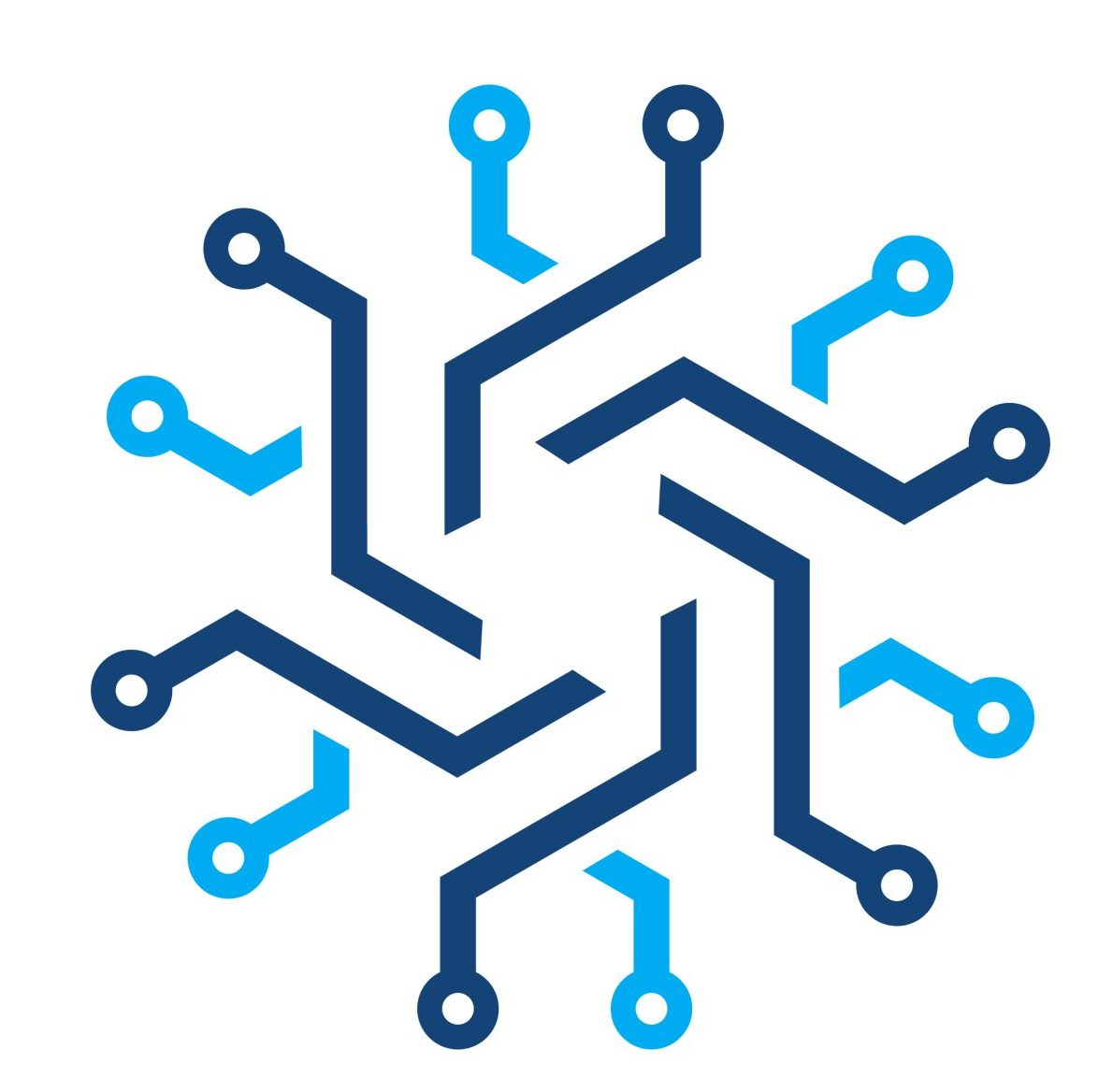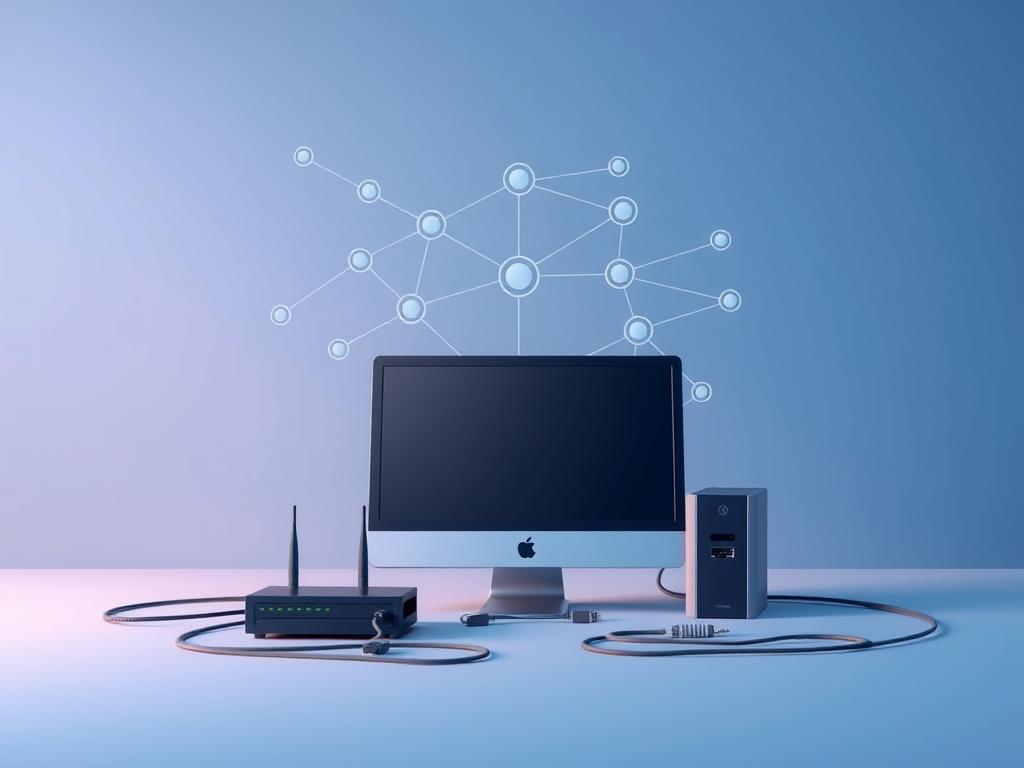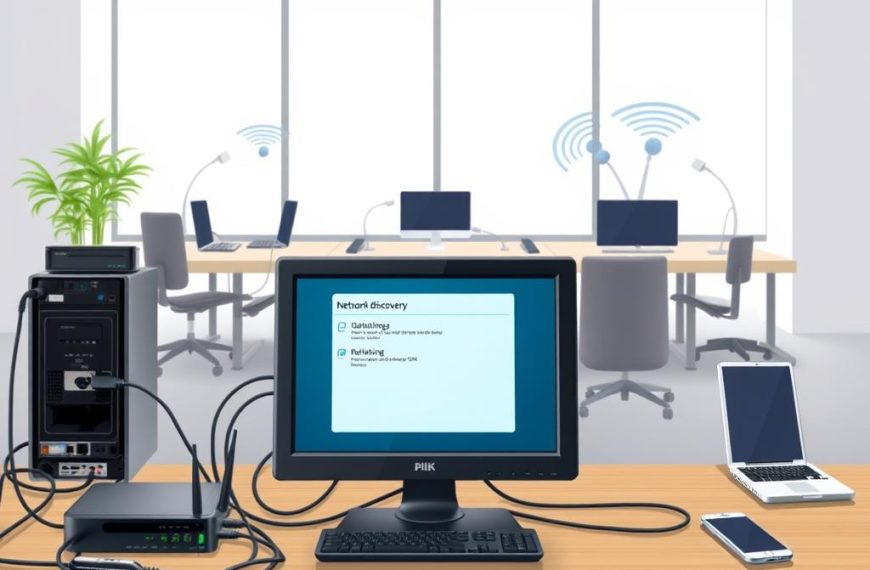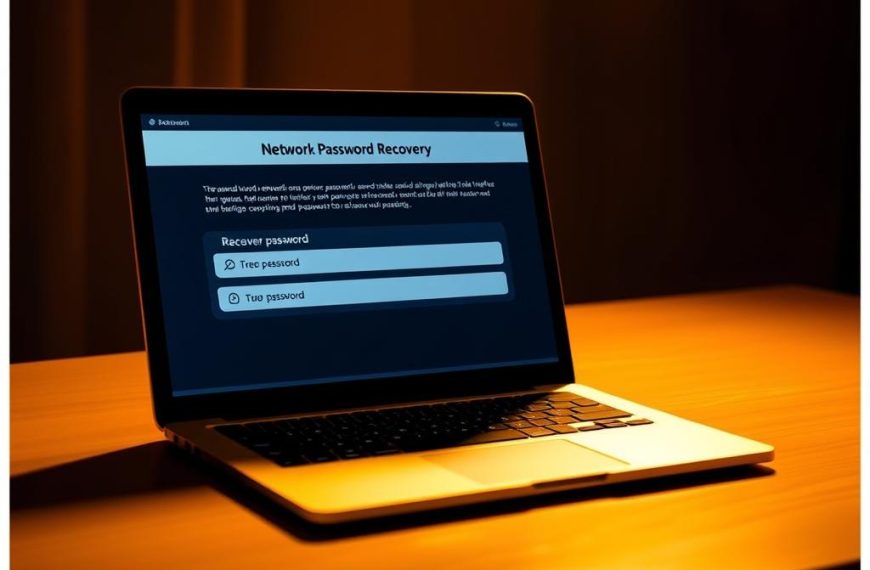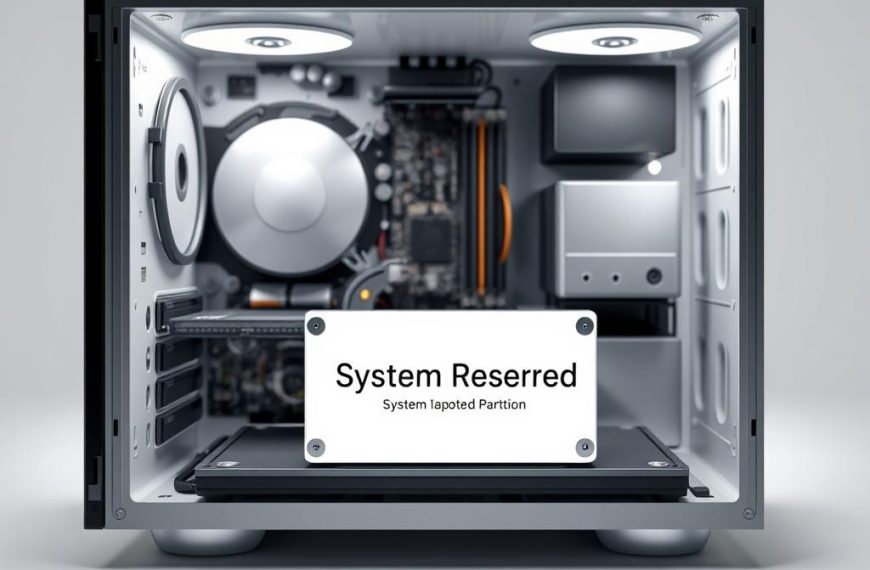Removing a computer from your network can be tricky. Half of users struggle with this task. It’s vital to know the right approach for network efficiency and security.
Network device management involves strategic steps to control your digital environment. Removing a computer needs careful planning and precise execution. This is crucial for outdated equipment or enhancing security.
Most users prefer simple removal methods over complex ones like reformatting. Learning basic techniques empowers you to manage your digital infrastructure confidently.
Technical challenges are common in this process. Expert advice often suggests using local admin credentials for network changes. Mastering these techniques will help streamline your network management.
This guide will explore strategies for removing computers from networks. You’ll gain the knowledge to maintain a secure and efficient digital ecosystem.
Understanding Network Device Management Fundamentals
Network device management is vital for modern organisational security. It helps businesses maintain robust and protected digital infrastructures. This approach is crucial for managing complex digital ecosystems.
Device connections are the backbone of sophisticated network architecture. Organisations must monitor these connections carefully. This ensures optimal performance and security.
Key Components of Network Architecture
- Centralized device management
- Secure network connections
- Comprehensive device tracking
Common Reasons for Removing Network Devices
Network security requires proactive management of device connections. Organisations remove devices for several critical reasons:
- Eliminating potential security vulnerabilities
- Reducing unnecessary network traffic
- Maintaining optimal network performance
Network Security Implications
Effective network security needs a multi-layered approach to device management. Mobile device management (MDM) is crucial for organisations supporting remote workforces.
| Management Strategy | Key Benefits |
|---|---|
| Mobile Device Management | Complete data protection and remote device control |
| Application Management | Selective data access and removal capabilities |
Comprehensive device management strategies create robust network architecture. These strategies balance security, flexibility, and performance effectively.
Essential Tools for Network Device Management
Network management tools have evolved significantly in recent years. The market is booming, with projections reaching $12 billion by 2027. Businesses are investing in advanced device monitoring software to enhance their digital infrastructure.
When choosing network management tools, organisations must weigh several key factors. These include comprehensive monitoring capabilities, real-time analytics, security features, and scalability.
- Comprehensive device monitoring capabilities
- Real-time performance analytics
- Security feature integration
- Scalability and flexibility
Several top-notch device monitoring software solutions have become industry leaders. These tools offer unique features to meet diverse network management needs.
- Auvik: Offers TrafficInsights™ with natural language analytics, priced at £150 per month
- Datadog: Provides powerful network performance correlation tools
- ManageEngine OpManager: Features over 2000 built-in network health monitors
- Domotz: Available in over 90 countries, with pricing around £25 per month
These network management tools are strategic assets for businesses. They enable proactive monitoring, security, and optimisation of digital ecosystems. Robust device monitoring software helps minimise downtime and maintain peak network performance.
How Do I Remove a Computer from My Network
Managing network devices can be tricky. About 25% of users report unauthorized access to their home networks. This guide will help you regain control of your network’s security.
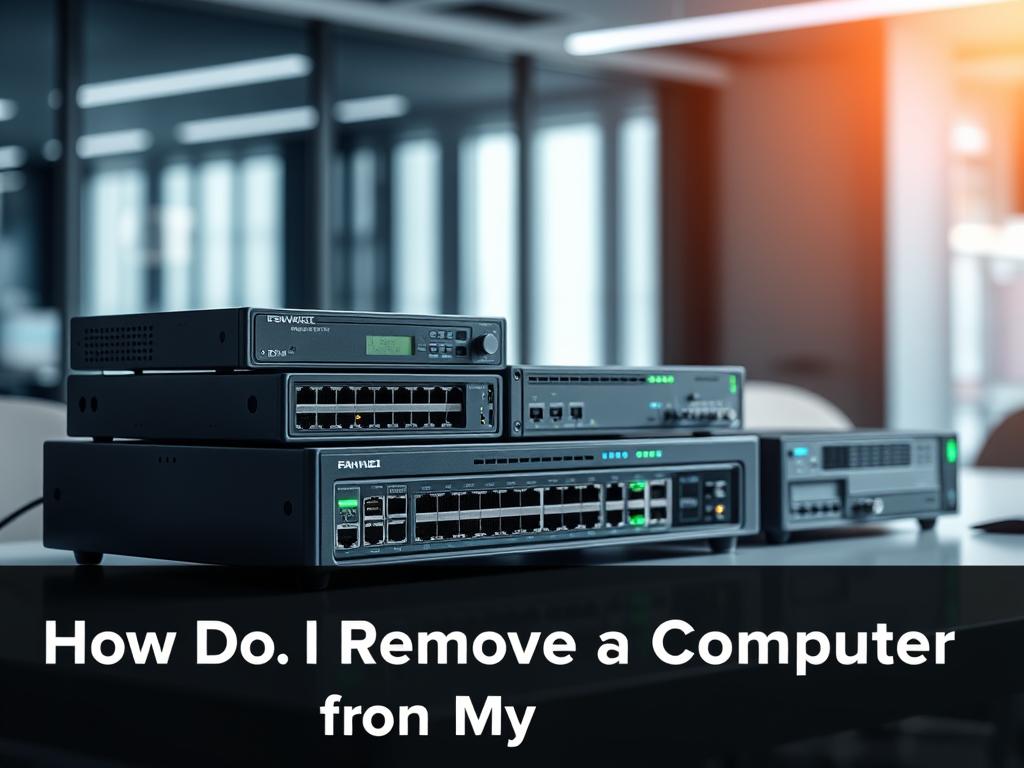
Removing computers from your network requires strategic approaches. Most home networks have 10 to 20 devices. Precise management is key for optimal performance and security.
Router Administration Techniques
Router administration is the most direct way to manage network devices. You can view and manage connected devices through your router’s control panel.
Access your router’s control panel to start. Then, find the connected devices section. Identify any unauthorized or unwanted computers. Finally, select and remove specific devices.
- Log into your router using its IP address
- Navigate to connected devices section
- Identify unauthorized or unwanted computers
- Select and remove specific devices
MAC Address Filtering Strategy
MAC address filtering is a robust solution for network security. It lets you create a whitelist of approved devices. This blocks any unauthorized connections.
- Access router administration interface
- Locate MAC address filtering settings
- Add MAC addresses of trusted devices
- Block or restrict unknown device addresses
DHCP Client Management
DHCP client management offers granular control over network access. About 60% of users change their Wi-Fi password for security. However, DHCP management provides more detailed control.
Proactively managing your network’s DHCP client list helps prevent unauthorized device connections and maintains network integrity.
These strategies will improve your network management. You’ll create a secure and efficient digital environment. Your approach will shift from reactive to proactive.
Advanced Network Monitoring Solutions
Network monitoring solutions are vital for maintaining secure network infrastructure. IT managers need powerful tools for comprehensive visibility and advanced diagnostics. These tools help track performance and identify potential vulnerabilities.
Modern network admins need sophisticated network monitoring solutions. These tools track device performance and ensure optimal network health. They’re essential for maintaining a robust digital environment.
Advanced IP Scanner Overview
Advanced IP Scanner is a free Windows-based tool for quick network scanning. It offers rapid network device discovery and detailed device information retrieval. The scanner also provides remote computer management capabilities.
Acrylic Wi-Fi Analyser Features
Acrylic Wi-Fi Analyser is an exceptional solution for wireless network monitoring. It’s available in free and paid versions. The analyser offers detailed network signal strength mapping.
It also provides advanced password management capabilities. Users benefit from its comprehensive network traffic analysis and intuitive interface.
Professional Network Management Tools
N-able N-central and ManageEngine OpManager offer enterprise-level monitoring. These tools provide multi-platform device monitoring and automated maintenance scheduling. They also feature advanced threat detection and proactive performance management.
These sophisticated solutions ensure seamless operations and minimise downtime. They help maintain robust cybersecurity protocols, crucial for modern organisations.
Best Practices for Network Device Maintenance

Network maintenance is vital for a robust digital infrastructure. Smart device management practices boost your network’s security and performance.
Effective network maintenance strategies include regular software updates and strong authentication. Periodic device assessments and comprehensive security protocols are also crucial.
Proactive network maintenance begins with understanding potential risks and implementing intelligent safeguards.
“A well-maintained network is the foundation of digital resilience.” – Cybersecurity Expert
Critical device management practices involve multi-factor authentication and WPA3 wireless security protocols. Robust network segmentation and regular device reboots are also essential.
Network security demands constant vigilance. Experts suggest separate network segments for Wi-Fi, guest access, and IoT devices.
Strong passphrases with at least twenty characters enhance security. Disabling remote administration can significantly reduce potential breaches.
Regular monitoring and logging device configurations are key to network maintenance. Limiting administrative privileges also helps create a secure digital environment.
Conclusion
Mastering network management strategies empowers you to streamline and secure your digital environment. Device removal benefits go beyond simple disconnection. They enable a more robust and efficient network infrastructure.
Network drive management is crucial in today’s interconnected world. About 30% of home network users face slower internet speeds due to unauthorised devices. Your new skills can significantly boost network performance.
Regular network reviews and clean-ups are essential. Cybersecurity experts recommend monthly scanning to ensure optimal system security. This proactive approach transforms challenges into opportunities for digital resilience.
Statistics show that 70% of home networks face potential unauthorised access attempts yearly. Strong passwords and device approval features can reduce these risks by up to 50%.
Remember, network management is an ongoing process. Continuous learning and regular system updates are key. Vigilant monitoring will help maintain a secure, efficient, and user-friendly network environment.
